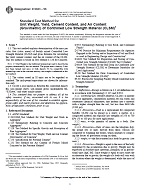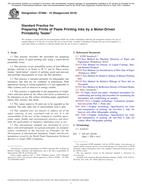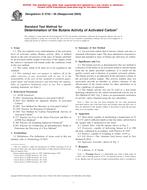1.1 The purpose of this guide is to assist users and producers of nonconventional tests in determining the applicability of the test for processing different types of samples and evaluating the accuracy of the results. Conventional procedures such as the Heterotrophic (Standard) Plate Count, the Most Probable Number (MPN) method and the Spread Plate are widely cited and accepted for the enumeration of microorganisms. However, these methods have their limitations, such as performance time and degree of accuracy. It is these limitations that have recently led to the marketing of a variety of non-conventional procedures, test kits and instruments.
1.2 A conventional test is one that is widely accepted and published as a standard microbiological method or related procedure. A new, nonconventional test method will attempt to provide the same information through the measurement of a different parameter. This guide is designed for comparing levels of bacteria recovered from samples by the Heterotrophic Plate Count Procedure to the equivalent units determined with a nonconventional test.
1.3 It is recognized that the Heterotrophic Plate Count does not recover all microorganisms present in a product or a system (1). When this problem occurs during the characterization of a microbiological population, alternate standard enumeration procedures may be necessary, as in the case of sulfate-reducing bacteria. At other times, chemical methods that measure the rates of appearance of metabolic derivatives or the utilization of contaminated product components might be indicated. In evaluating nonconventional tests, the use of these alternate standard procedures may be the only means available for establishing correlation. In such cases, this guide can serve as a reference for those considerations.
1.4 Since there are so many types of tests that could be considered nonconventional, it is impossible to recommend a specific test protocol with statistical analyses for evaluating the tests. Instead, this guide should assist in determining what types of tests should be considered to verify the utility and identify the limitations of the nonconventional test.
Product Details
- Published:
- 10/10/1998
- Number of Pages:
- 3
- File Size:
- 1 file , 70 KB


